It’s quite easy to find fish food, regardless of whether your fish are freshwater or marine fish. However, when it comes to coral, many of us tend to ignore their needs. The truth is coral has a very specific diet and can even die without food.
Therefore, you must choose the best coral food for their healthy growth. You must also keep an eye on the nutritional value of the coral food that you give them.
There is a lot to learn when it comes to coral food and nutrition.
So, let’s delve deeper into this in-depth coral food guide today!
| IMAGE | PRODUCT | Nutrients | rating | price |
|---|---|---|---|---|
Overall Best | POLYPLAB – Reef-Roids | Proteins, carbohydrates, vitamins, amino acids, and fatty acids | ||
Best Coral Food for Beginners | Coral Frenzy Powder Formula with Probiotics | Proteins, carbohydrates, vitamins, and fatty acids | ||
 | Red Sea Aquarium Supplement | Organic complex, marine amino acids (MAA), and essential vitamins | ||
 | Two Little Fishies ATLMSPD4 Marine Snow | Proteins, carbohydrates, vitamins, and fat | ||
 | Kent Marine PhytoPlex | Proteins, carbohydrates, and lipids | ||
 | Benereef 40g Jar | Proteins, carbohydrates, vitamins, probiotics, amino acids, and fatty acids | ||
 | Two Little Fishies ATLGP1RTG Goniopower Advanced Zooplankton Diet | Proteins, carbohydrates, vitamins, pigments, amino acids, and fatty acids |
Coral 101: The Biology of Coral
Let’s cover the basics first.
When I first saw coral when I was visiting tropical seashores, I thought, “Oh look, pretty rocks!”
I bet most of you guys thought the same when you first saw them too.
But that’s not the case, as you know, because coral are alive and they are animals. To be more precise, a coral is a colony of thousands of miniature animals which are called coral polyps.
These animals are distant cousins of jellyfish and anemone.
The size of a coral varies. It can be as small as a pinhead or as large as a basketball. I will talk more about their size and classification later on.
But how can small animals form a solid rock formation?
The coral polyps sit on hard rocky shells and form the skeleton. These skeletons are called calicles, and this is the part we mostly notice.
The body of a coral polyp consists of 4 major parts:
- Mouth
- Saclike body
- Tentacles which sting
- Calicles
Polyps use the mouth to collect different minerals and secrete the deposits in order to construct a calcium carbonate skeleton underneath. The mouth also consumes food.
The tentacles are mainly the protection unit of the polyps so that different animals can’t harm them. The body also houses other important micro organs.
Now we’ve come to the important topic – how do coral eat?
In nature, 95% of their total food comes from algae called zooxanthellae. These algae are the main food suppliers of coral. In addition, polyps consume different zooplankton.
A symbiotic relationship can be seen here.
The zooxanthellae provide oxygen, sugar, and essential fats to the polyps. In return, the polyps offer them CO2, phosphorus, and nitrogen. Additionally, the polyps protect the zooxanthellae with their hard shells.
Do you know that coral are basically translucent? It means that they don’t have any color of their own. The vibrant colors come from the zooxanthellae. If coral fall victim to any kind of environmental threat, they release zooxanthellae and die out.
This phenomenon is known as coral bleaching.
7 Best Coral Foods 2020
1. POLYPLAB – Reef-Roids – Overall Best
POLYPLAB – Reef-Roids is certainly one of the superior coral foods on the market. This is mainly because it is a special, coral-only food.
Unlike many other coral food manufacturers, they haven’t used processed fish meals. Therefore, coral will not have to fight with the fish for food.
One of the key features of the POLYPLAB Reef-Roids is that the grain size of this food ranges from 150 to 200 microns. This is the perfect size for coral food as the plankton in the ocean tends to be of a similar grain size.
Give it a little bit of a stir, and the mixture will dissolve in the water in no time. It’s better to use the target feeding method for better usage.
Key Ingredients: marine plankton
Guaranteed Analysis
- Crude protein (min): 60%
- Crude fat (min): 20%
- Crude fiber (max): 8%
- Ash (max): 6%
- Moisture (max): 6%
Notable Features
- Designed to feed only coral
- Grain size ranges from 150 to 200 microns
- Dissolves in water and doesn’t pollute it
- Made of natural phytoplankton and zooplankton
2. Coral Frenzy Powder Formula with Probiotics – Best Coral Food for Beginners
Coral Frenzy is the most popular, if not the best, coral food on the market. The popularity of this coral food is mostly due to the ease of use.
If you have just started out with a reef tank, I personally recommend that you use Coral Frenzy.
Why is that?
Coral Frenzy is the solution to all your reef tank food requirements. It’s a dried food which fish, coral, and plankton can enjoy.
The particle size of this food is between 53 to 1700 microns., so the coral will get smaller grains, and the fish can enjoy larger grains.
Another factor which I love about Coral Frenzy is that all the ingredients are written on the packaging label. There are no hidden ingredients, so you can be aware of everything which you are putting into your tank.
You should stick to the broadcast feeding method with this food.
But make sure to use only a small amount of food initially. Also, turn off the skimmer when feeding.
Key Ingredients: fish protein, oyster larvae, salmon roe, dunaliella salina, schizochitrium, rotifers, copepods, daphnia, spirulina, and haematococcus pluvialis
Guaranteed Analysis
- Crude protein (min): 52.8%
- Crude fat (min): 9.8%
- Crude fiber (max): 1.6%
- Ash (max): 14.2%
- Moisture (max): 6.8%
- Omega 3 (min): 26.7%
- Omega 6 (min): 10.6%
Notable Features
- All-purpose reef tank food
- Made from natural ingredients
- Grain size ranges from 53 to 1,700 microns
3. Red Sea Aquarium Supplement – Best Coral Food Supplement
Did you know that coral receive 95% of the total nutrient from zooxanthellae? It’s hard to culture zooxanthellae in your reef tank.
But what if you could get a coral food which offers the same kinds of nutrients for coral?
You can, and it’s Red Sea Aquarium Supplement.
Reef Energy A/B is a two-part supplement which provides dissolving organic complex to provide energy, marine amino acids (MAA), and essential vitamins.
These are the exact nutrients which are offered by coral’s symbiotic partner, zooxanthellae. As well as providing energy, this supplement boosts metabolism, protein production, and soft tissue regeneration.
As it is a liquid supplement, you will not need to worry about wastage and nitrate production.
However, beginners may struggle to use this product. You must carefully monitor the dosage. If you use too much of it, there will be an uncontrollable algae outbreak. Also, if you withdraw it, algae will disappear.
Key Ingredients: organic complex of dissolved and suspended nutrients, amino acids and vitamin complexes
Notable Features
- Promotes algae (zooxanthellae) production
- Exact nutrients that coral receive in a natural environment
- Good for metabolism and protein production
- Regenerates soft tissue and promotes growth
4. Two Little Fishies ATLMSPD4 Marine Snow – Best Biogenic Material
This is another unique coral food on my list today. As with the Red Sea Reef Energy A/B, it’s a supplemental food.
Two Little Fishies ATLMSPD4 Marine Snow is rich in plankton. In addition to phytoplankton and zooplankton, this supplement contains bacterioplankton or reef snow.
So, if you think about it, Two Little Fishies ATLMSPD4 Marine Snow is the natural food for the coral in your tank.
Also, this food dissolves in water, so you can utilize both broadcast and target feeding methods.
However, you must be very careful when using it. Always stick to the instructions of the manufacturers, otherwise you could end up damaging your coral.
You must keep this food in the refrigerator, ideally at a temperature between 38°F and 43°F.
Key Ingredients: deionized water, phytoplankton, nannochloropsis tetraselmis, isochrysis, spirulina, schizochitrium, and seaweed meal.
Guaranteed Analysis
- Crude protein (min): 0.10%
- Crude fat (min): 0.01%
- Crude fiber (max): 0.30%
- Moisture (max): 99.6%
Notable Features
- Made from natural phytoplankton, zooplankton, and bacterioplankton
- Suitable for both LPS and SPS coral
- Dissolves in water and doesn’t increase nitrate percentage in the tank
- Complete plankton diet that coral gets in nature
5. Kent Marine PhytoPlex – Best Food for SPS Coral
Kent Marine PhytoPlex is the ultimate phytoplankton mix for your coral. However, as LPS coral prefers zooplankton, this is more suitable for SPS coral which loves phytoplankton.
Kent Marine PhytoPlex is rich in proteins carbohydrates, and lipids, so you will be giving them an ideal food.
In addition to SPS coral, other similar marine animals can also benefit from this food, such as clams, sponges, and scallops.
The grain size of this food is very small. The average grain size ranges from 2 to 15 microns, so you can dissolve this mix in the water.
You can use either broadcast or targeted feeding methods.
However, make sure to stick to the limits mentioned by the manufacturers. You can easily overfeed your coral with Kent Marine PhytoPlex.
Key Ingredients: aqua-cultured, naturally-occurring phytoplankton
Guaranteed Analysis
- Crude protein (min): 0.4%
- Crude fat (min): 0.2%
- Crude fiber (max): 1.0%
- Moisture (max): 96.0%
- Omega-3 Fatty Acids: 0.02%
Notable Features
- Suitable for SPS coral and other similar marine animals
- Complete coral diet fulfilling protein, carb, and fat requirements
- Average grain size ranges from 2 to 15 microns
- Fully dissolves in water
6. Benereef 40g Jar – Best Coral Food to Boost Immune System
Benereef is another complete all-purpose marine food that you can use for your coral. You can use this in your reef tank for both fish and coral at the same time.
Benereef aims to create a healthy overall marine system in your tank. As well as offering healthy nutritional value, it also aims to improve the coloration of your coral.
This food is rich in probiotics, meaning that it boosts the immune system of coral and other marine life. If you look at the list of ingredients, you will notice that this food paste is full of healthy elements.
With this food, your coral will get nutrition, better color, and have a stronger immune system.
However, as this food doesn’t dissolve in water, there is a risk of food wastage and an increase of nitrate percentage.
Also, make sure you don’t overfeed your coral with this.
Key Ingredients: salmon fish meal, freeze-dried plankton, brine shrimp, rotifers, copepods, brewer’s yeast, corn starch, calcium powder, astaxanthin, spirulina, garlic powder, marine fish oil, soy flour, lactobacillus, saccharomyces and bacillus species
Guaranteed Analysis
- Crude protein (min): 25.5%
- Crude fat (min): 4.7%
- Crude fiber (max): 44%
- Ash (max): 5%
- Moisture (max): 6.5%
- Phosphorus (min): 0.6%
Notable Features
- All-purpose reef tank food
- Improves coral coloration
- Rich in probiotics
- Doesn’t cloud the water
7. Two Little Fishies ATLGP1RTG Goniopower Advanced Zooplankton Diet – Best LPS Coral Food
Zooplankton is the main diet of LPS coral. So, if you have LPS coral in your tank, you can easily choose Two Little Fishies ATLGP1RTG Goniopower as it is rich in healthy zooplankton.
This is the latest creation of Justin Credabel, the legendary marine aquarist from Connecticut. He is also the owner of Credabel Coral Lab which works with coral aquaculture and coral research.
In addition to proteins and carbohydrates, Two Little Fishies ATLGP1RTG is rich in vitamins, pigments, amino acids, and fatty acids.
Key Ingredient: freeze-dried zooplankton
Guaranteed Analysis
- Crude protein (min): 50%
- Crude fat (min): 5%
- Crude fiber (max): 10%
- Moisture (max): 15%
Notable Features
- Specially designed for LPS coral and other similar invertebrates
- Made from dried zooplankton
- Formulated by the legendary Justin Credabel
- Rich in proteins, carbohydrates, vitamins, pigments, amino acids, and fatty acids
What is the Best Food for Coral?
As the main natural diet of coral consists of plankton, the ideal food should also consist of plankton.
From that perspective, I would put POLYPLAB – Reef-Roids in first position. The main two ingredients of this coral food are phytoplankton and zooplankton.
Furthermore, the quality of these plankton is extremely high and the food dissolves in water and doesn’t pollute or cloud the water.
You can use both broadcast and target feeding methods with this food.
From every angle, it is an ideal food!
More: Guide to what is the best fish for nano tank
What Types of Coral Are There?
As you are aware, coral are the skeletons of coral polyps. However, not all coral polyps are the same.
There are two types of coral polyps :
- SPS coral (small polyps stony)
- LPS coral (large polyps stony)
Yes, size is the key differentiator between these, but there are some significant other differences between them.
SPS coral (small polyps stony)
Firstly, these coral are made of smaller polyps which somehow mimic the appearance of a flower. They live on the upper level in the sea as they demand strong current and bright sunlight in order to grow.
They are quite friendly compared to the LPS and will colonize easily with other species.
However, they can’t stand nitrates and will suffer greatly if the nitrate level in the water is high.
Naturally, they depend on zooxanthellae for food and, in return, offer them food and safety.
LPS coral (large polyps stony)
As the name suggests, LPS is the larger variant. It has a large fleshy body which can be as large as a basketball.
Unlike the SPS, they prefer living in the depths of the water and move along with the current flow.
They also demand sunlight, but not as much as the smaller coral. LPS can thrive even in medium sunlight.
The biggest difference between SPS and LPS is hostility. The LPS are quite hostile and sting their neighbors in order to gain territorial advantage.
When it comes to food, LPS and SPS tend to have similar food habits. If you want to keep LPS in your aquarium, make sure to offer them an ample amount of food, otherwise they will show hostility and attack other members in the aquarium.
What Does Coral Eat?
Firstly, they will not eat your precious fish!
Regardless of type, coral have only two things in their food habits:
- Phytoplankton
- Zooplankton
Phytoplankton is a miniature plant. It can be microscopic in size. Mostly, phytoplankton in the coral diet consists of different kinds of algae.
Similarly, zooplankton is a small microscopic animal. As zooplankton are self-propelling, SPS coral find it difficult to catch. However, it’s very easy for LPS coral.
But both the SPS and LPS coral love zooplankton as well.
As well as phytoplankton and zooplankton, coral also eat bacterioplankton. Some people prefer to call this reef snow.
Also, you can use dissolved organic food material for your coral.
How Do You Feed Coral?
Most commercial coral food comes in flakes or pellets. Only a few come in liquid form which dissolves in the water. Therefore, some people believe that tossing flakes or pellets in the water is all it takes. So, from that point of view, liquid coral food is better to use.
However, the process of feeding coral is a bit more complex than feeding flakes to your fish.
Unlike fish, coral have a hard time identifying what is and what isn’t food. That’s why, if you pour in food, coral might not consume it. This leads to an increase in waste food in the tank, and eventually, an increase in nitrates.
There are two popular methods for feeding coral:
- Broadcast feeding
- Target feeding
Broadcast Feeding
The basic concept of broadcast feeding is spreading the grains of food throughout a large area, creating waves. You will need a pump or similar device which stirs the water.
You must place a pump in the tank and turn it on to create waves. Now, pour flakes or pellets in front of the waves. The waves will carry the grains to the coral.
As you can imagine, you will have less control in this process as a large amount of food will still remain uneaten. It’s better to use all-purpose food which both coral and fish can eat, otherwise you will end up with a lot of uneaten food in the tank.
Target Feeding
The second method is the target feeding method. This method is more controlled, and there is less chance of food going to waste.
You will need a syringe or similar tools for this method. You must create a food mix and put it in a syringe. Then, you can deliver the food directly to the coral’s mouth.
This process is a bit time consuming, but it will help you maintain better water quality.
So, which method should you use?
Well, there is a simple strategy which you can use here. If you have LPS coral in your tank, you should use the target feeding method. As LPS are more aggressive, they will get an ample amount of food and will not agitate other species in the tank.
If you have SPS coral in your tank, you can stick to the broadcast method. As you will be spreading the food, it will reach tough and narrow cracks. Therefore, all the coral will get enough nourishment.
Conclusion
It’s really hard to rank the best coral foods as all of them serve different purposes, and all of them seem to work very well.
However, just for the sake of ranking, POLYPLAB – Reef-Roids is in first place. Next is Coral Frenzy Powder Formula with Probiotics.
In third place is Red Sea Aquarium Supplement.
What do you think about these coral foods? Let me know in the comments section!


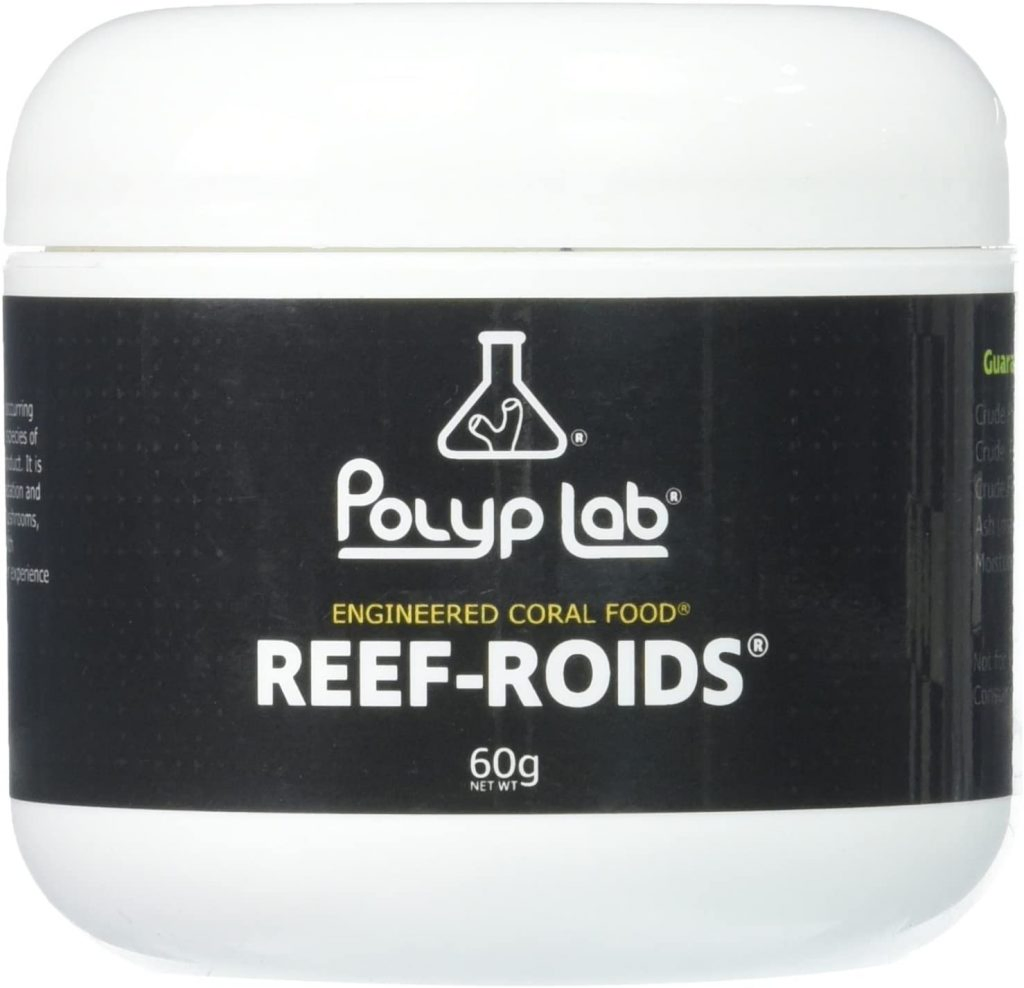
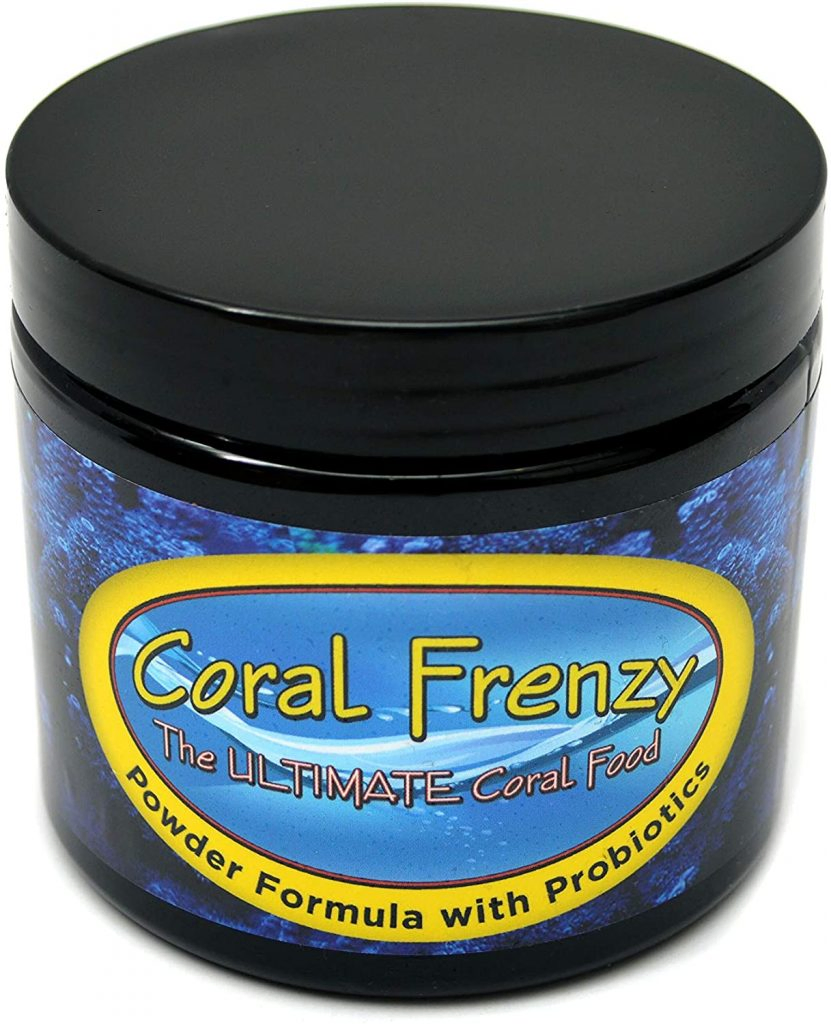


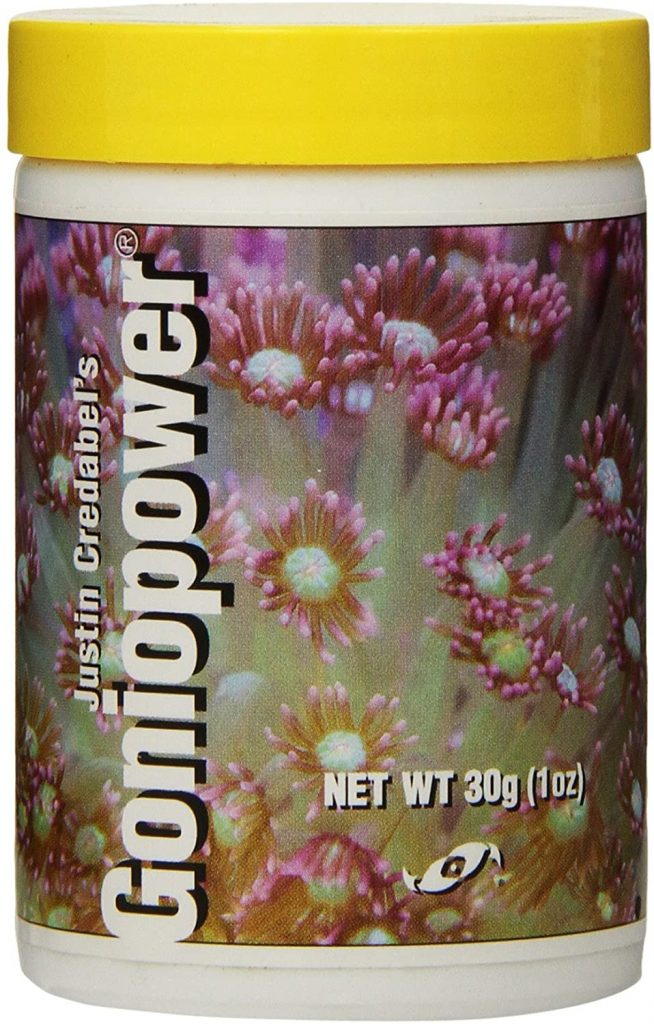

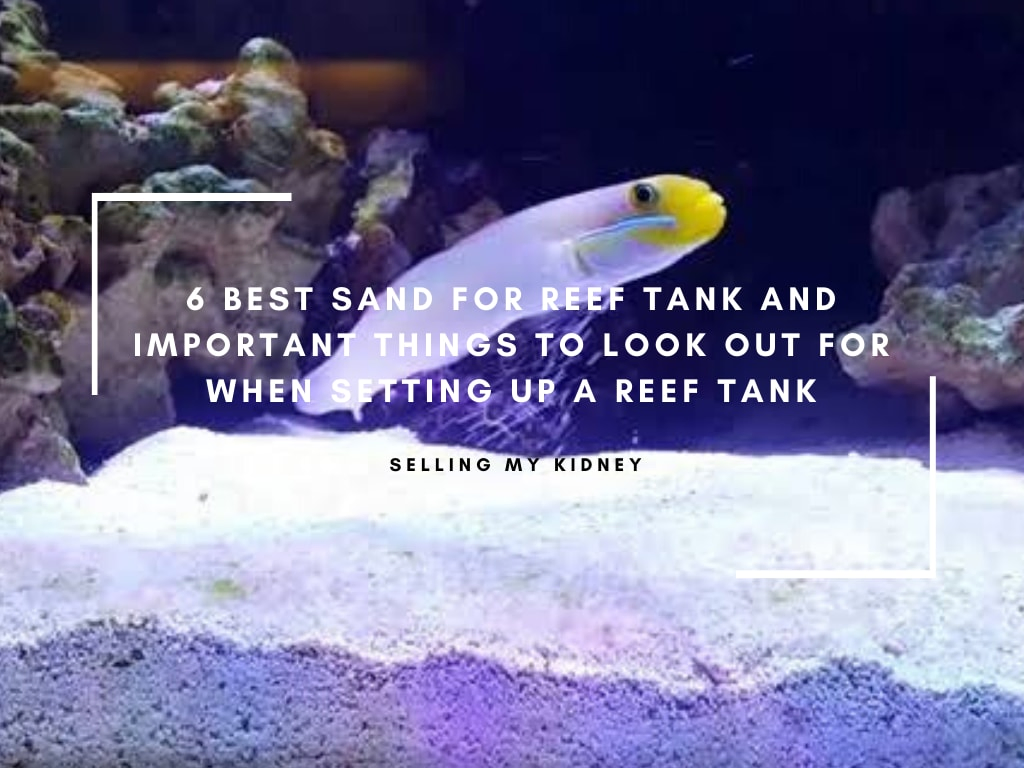
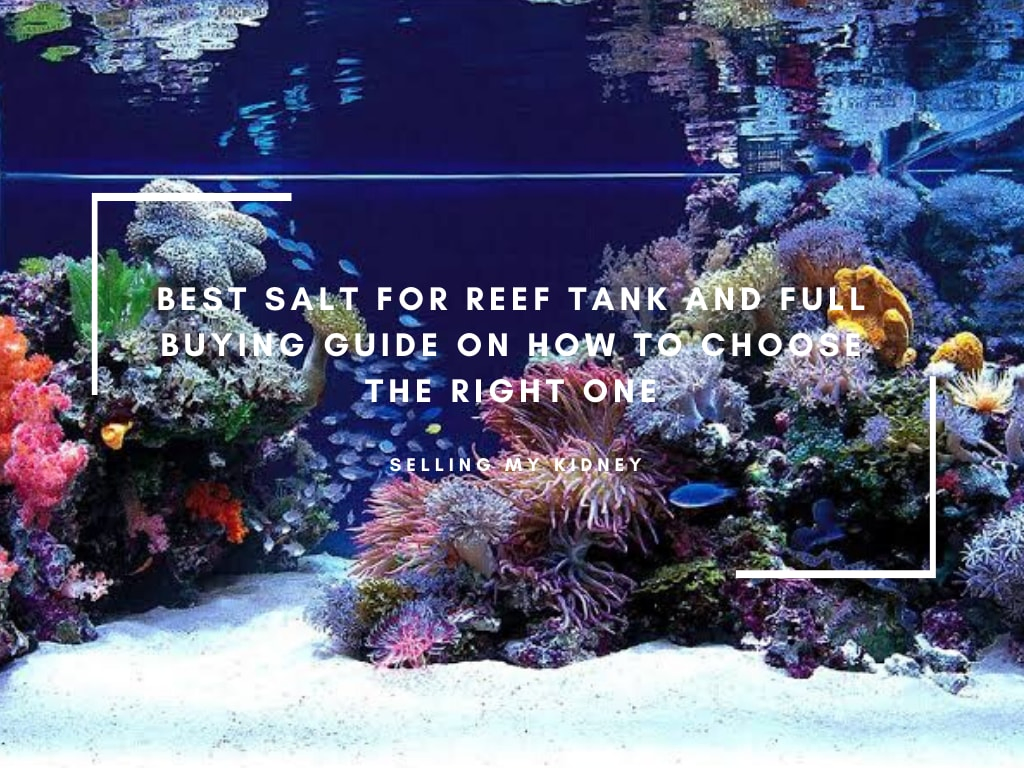
![The Best LED Lighting for Reef Tanks [With Buying Guide] 21 LED Lighting for Reef Tanks](https://animalfella.com/wp-content/uploads/2020/04/LED-Lighting-for-Reef-Tanks.webp)

![The Best Corals for Reef Tanks [Complete Guide] 23 Hammer Corals](https://animalfella.com/wp-content/uploads/2020/07/Hammer-Corals-1024x693.webp)